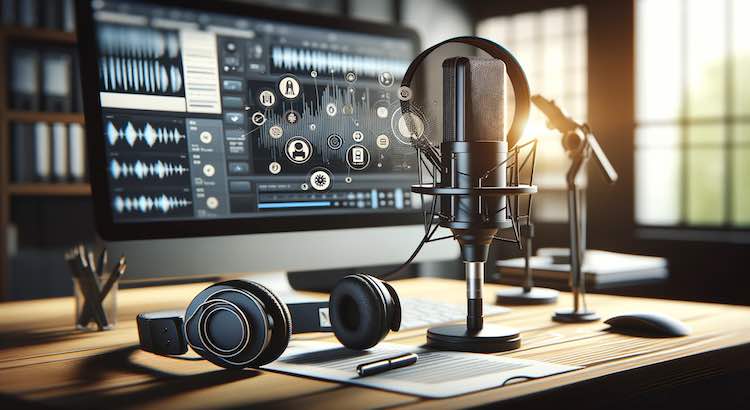How to Record High-Quality Audio for Accurate Automated Transcription
Automated transcription has reshaped the way journalists, researchers, podcasters, and other professionals work with audio content. By turning speech into text, it makes searching and analyzing information far easier. Yet, the accuracy of automated transcription depends mainly on the quality of the recorded audio. Let's explore practical ways to record clear audio that leads to optimal transcription results.
What Is Automated Transcription?
Automated transcription uses artificial intelligence to convert spoken words into written text. Modern speech recognition software has improved a lot, but it is not perfect. Inaccurate words often come from poor audio quality, heavy accents, overlapping voices, or background noise.
- A study shows even top automated tools reached only about 84% accuracy with average-quality recordings (Stanford, 2023).
- Poor audio or noisy environments can cause error rates above 20%, making readability and searchability a challenge (IBM, 2022).
To help AI transcription work best, start with a high-quality audio recording every time.
Best Tips for Capturing Clear Audio
Better audio means better transcripts. Here are proven strategies for anyone recording audio for transcription services:
Pick the Right Equipment
- Choose a quality microphone. USB or condenser microphones capture more detail than a built-in laptop mic.
- Consider an external recorder. Some recorders have built-in noise reduction for tricky environments.
Create a Quiet Recording Environment
- Record indoors in a quiet room. Avoid areas near traffic, loud fans, or busy hallways.
- Turn off extra devices. Silence phones, printers, and electronics during the session.
Microphone Placement Tips
- Place the microphone 6–12 inches from the speaker's mouth. Too close causes distortion; too far adds noise.
- Point the microphone at the mouth. Adjust for the clearest sound, especially for soft-spoken people.
- Use a pop filter or windscreen. These tools cut down harsh “p” and “s” sounds for smoother audio.
Speak for Transcription Success
- Encourage clear, steady speech. Avoid mumbling and talking too fast. Pause between thoughts.
- Say names and technical terms clearly. Spell out or repeat unusual words and acronyms when possible.
Before the Session: Test and Adjust
- Do a brief test recording. Listen back with headphones and tweak settings as needed.
- Adjust input levels. Make sure the audio isn’t too loud (clipping) or too quiet (distorted).
After Recording: Polish Your Audio
- Edit out background noise and silences. Use basic audio editing software to trim and clean the file.
- Normalize audio levels. Consistent volume helps both people and software process the recording better.
Boost Audio Quality with Technology
Technology makes it easier than ever to record, edit, and share clear audio files. Here’s how you can use tools and workflows to ensure the best transcripts from your recording:
- Noise reduction software: Many apps—both free and paid—automatically filter out background sounds.
- Audio enhancement tools: Raise voice frequencies or remove non-speech sounds with audio plugins or built-in features in editing apps.
- Use the right file format: Save recordings as uncompressed WAV or high-rate MP3 for automated transcription.
- Transcribe in the language spoken: Choose transcription software that supports the recorded language and accent.
Why Accurate Audio Matters in Automated Transcription
- Mistakes can lead to misunderstanding important research, missing legal details, or misquoting interviews.
- Clean audio reduces time spent on transcription proofreading.
- Fast, accurate transcripts help you order transcription services with quick turnarounds and lower costs.
Extra Tips for Real-World Recording Situations
Remote Meetings or Interviews
- Use headphones and a dedicated microphone, not your computer speaker and laptop mic.
- Ask all participants to mute when not speaking.
Large Group Events
- Use multiple microphones to capture questions and group discussions.
- Consider hiring a professional audio technician for lectures or panels.
Conclusion: Make Every Word Count for Accurate Transcription
Perfect audio isn't just for music—it's the key to precise, easy-to-use automated transcripts. Good microphones, quiet spaces, and smart editing are the best ways to get reliable AI-powered text from your recordings. Following these steps saves time, money, and frustration.
Whether you are a journalist, researcher, student, or business professional, GoTranscript can help you capture and convert your high-quality audio. From human-powered transcription to automated AI transcription subscriptions, closed caption and subtitling services, GoTranscript provides affordable solutions for every need. Check out our current transcription pricing and start your next project with confidence.



















 Verified Order
Verified Order